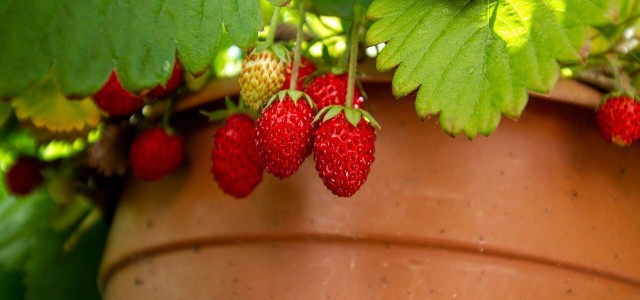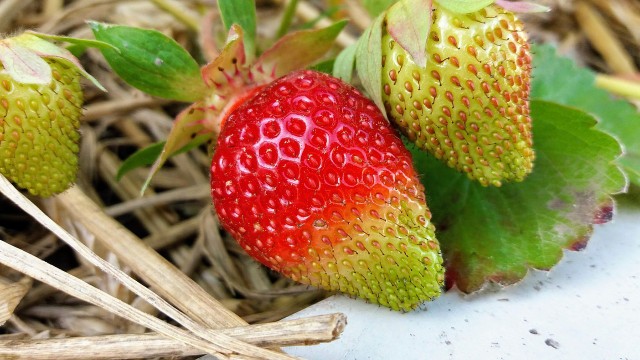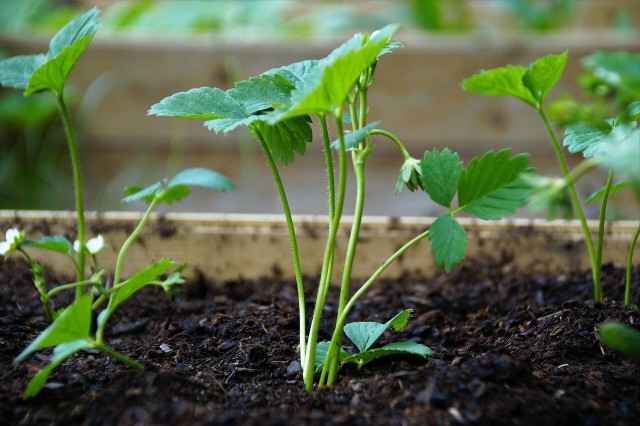
If you want to propagate strawberries, we have suitable instructions for you. Because: They taste best when they come from your own strawberry plants.
Strawberry plants are perennial, so you can enjoy the fruits for several years. Different varieties offer different sized and sweet tasting berries. If you want to propagate the healthy strawberries, you can do it by sowing seeds you have collected yourself or by using cuttings.
Contents
Propagate strawberries by seed

Botanically, the strawberry is not a berry, but a nut. You can learn more about it here: Why the strawberry is a nut. You can use this knowledge to propagate strawberries.
Propagating strawberries by seed works with all strawberry varieties, but is a bit laborious. It often causes the plants to lose their characteristics. That is, you can’t know if the new plant will bear many fruits and how the strawberries will taste.
The best time to collect seeds is in the summer when the strawberry plants are fruiting.
- Cut strawberries in half that are fully colored, i.e., ripe.
- Place the halves cut-side down on a newspaper and let them dry. Tip: If you are concerned about mold, you can carefully remove the outer skin from the fruit and dry it along with the seeds.
- Once the strawberries are dry (at least the outer skin), you can carefully scrape off the seeds with the blunt side of a kitchen knife. These are the small, green seeds (nuts) on the outside of the strawberries.
- Let the seeds dry for several months and store them in a dry, dark place in a sealable container.
- Sow the seeds preferably next spring (mid-February to early March). It is also possible to sow them the same year, but the plants need a certain size to survive the winter outside. Read more: Overwintering strawberries: the ideal winter quarters.
- Let the seeds pre-swell in a bowl of water for about four to six hours immediately before sowing.
- Then prepare a pot with a permeable and rather nutrient-poor soil. For example, you can mix growing soil with sand.
- Lightly scrape off the top layer of soil and place the seeds in it.
- Place only a thin layer of soil over the seeds (no more than three millimeters high).
- Sprinkle the soil with water, such as rainwater, and place a glass container or an old plastic bag that you reuse over the pot with the seeds. Note: If possible, do not buy new plastic bags, as plastic waste is a problem for the environment. Read more: Plastic waste – the 5 worst consequences.
Place the pot in a bright place, but not in direct sunlight. For germination, a temperature between 15 and 18 degrees Celsius is optimal. Keep the seeds moist. The seeds will begin to germinate after about two to six weeks. When the seedlings are about two centimeters high, you can place them in slightly more nutritious (i.e. lightly fertilized) soil. When they are four to five centimeters high, you can put them wherever you want: in the garden or on the balcony.
Propagate strawberries with a cutting

Another way to propagate strawberries is to cut a runner: Most strawberry varieties form runners that you can cut off and grow into your own plants. So this option works only with varieties that form such runners, but then it is also very simple.
It is best to propagate strawberries in this way when the plants are well rooted, not in the first year. Strawberry plants often form runners already in the first late autumn and propagation is theoretically already possible then.
The best time for this type of strawberry propagation is in midsummer between the end of July and the beginning of August. However, it is also possible a little later.
Choose an offshoot of a strawberry plant, which otherwise always bears many and delicious fruits. After all, you are creating a clone of the plant and want to enjoy a rich strawberry harvest. It may be useful to mark such a plant in the previous year (for example, by a ribbon or a stick).
- Choose an offshoot that is as close as possible to the mother plant, as they are usually particularly vigorous. On the shoots that the plants form, there are small young plants, the “childels”.
- Carefully detach this shoot from the soil.
- Dig out some soil underneath and place a small clay pot (unglazed, about ten centimeters in diameter) inside. Do not use a plastic pot, as it is impermeable to water.
- Fill the pot with soil. Use nutrient-rich garden soil. If you take the soil you dug up, you can enrich it with compost or another organic fertilizer. To make the soil more permeable, you can mix it with some sand.
- Plant the selected shoot with the young plant in it.
- Leave the connection between the mother plant and the daughter plant for the time being. If a shoot emerges from the young plant, cut it off. In this way you ensure that no other daughter plants are formed and that the nutrients are only passed on to the daughter plant that you have selected for the propagation of the strawberry.
Water the planted runner properly.
After a few weeks, the young plant will be strong enough to plant out. So in late summer you can cut off the shoot between the mother and daughter plants and dig up the pot with the young plant. Then keep the new plant in the pot sufficiently moist until a robust root ball has formed. After that you can place the strawberry plant where you want it. It is also possible to leave the plant in the pot for the first winter and place it in the bed in the spring.
After harvest time you should fertilize strawberries to give them strength to regenerate.
Keep in mind that strawberry plants need a lot of nutrients and will cause “soil fatigue”. This means that you should change the soil regularly or wait about four years before planting new plants in soil in which strawberries have already rooted.

